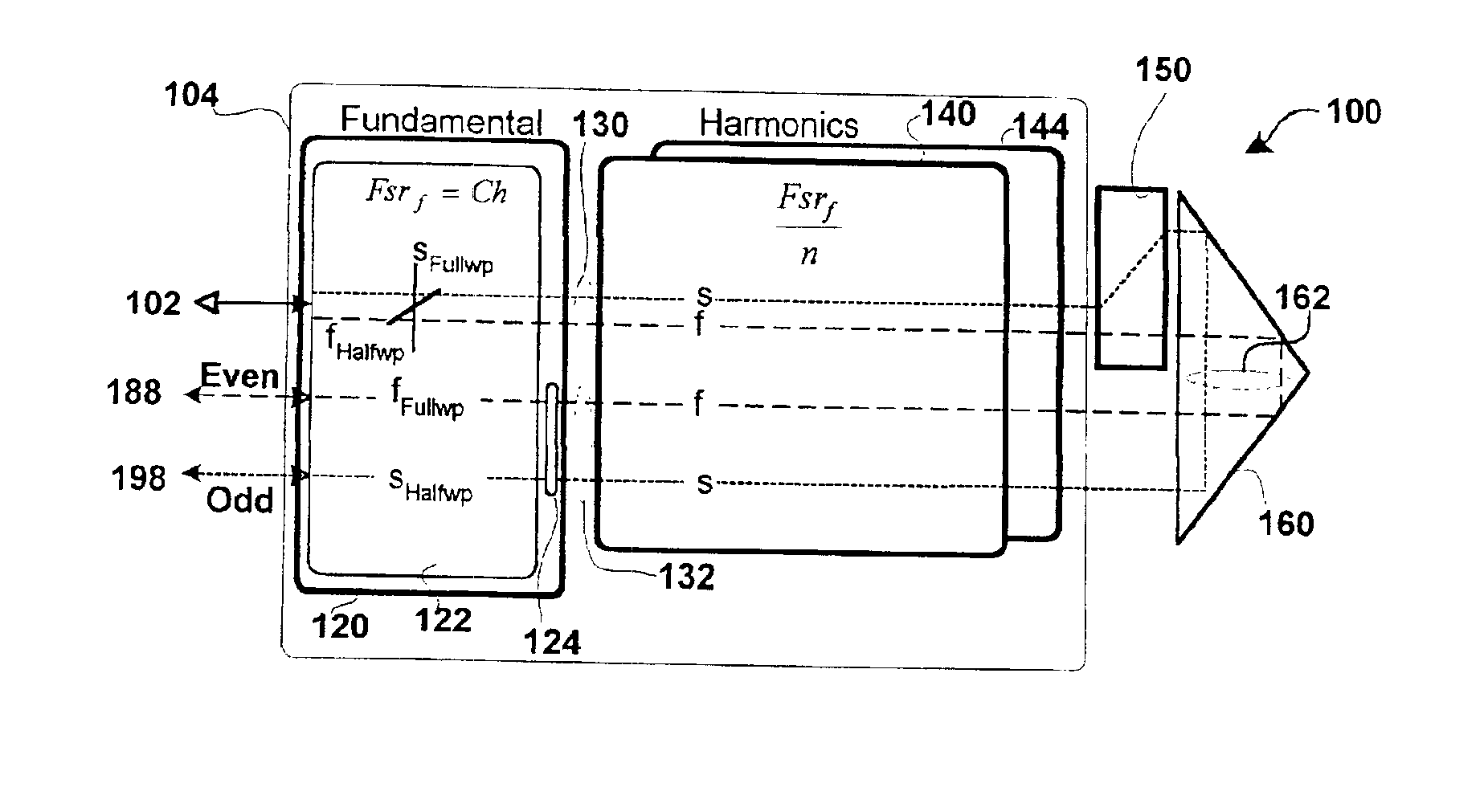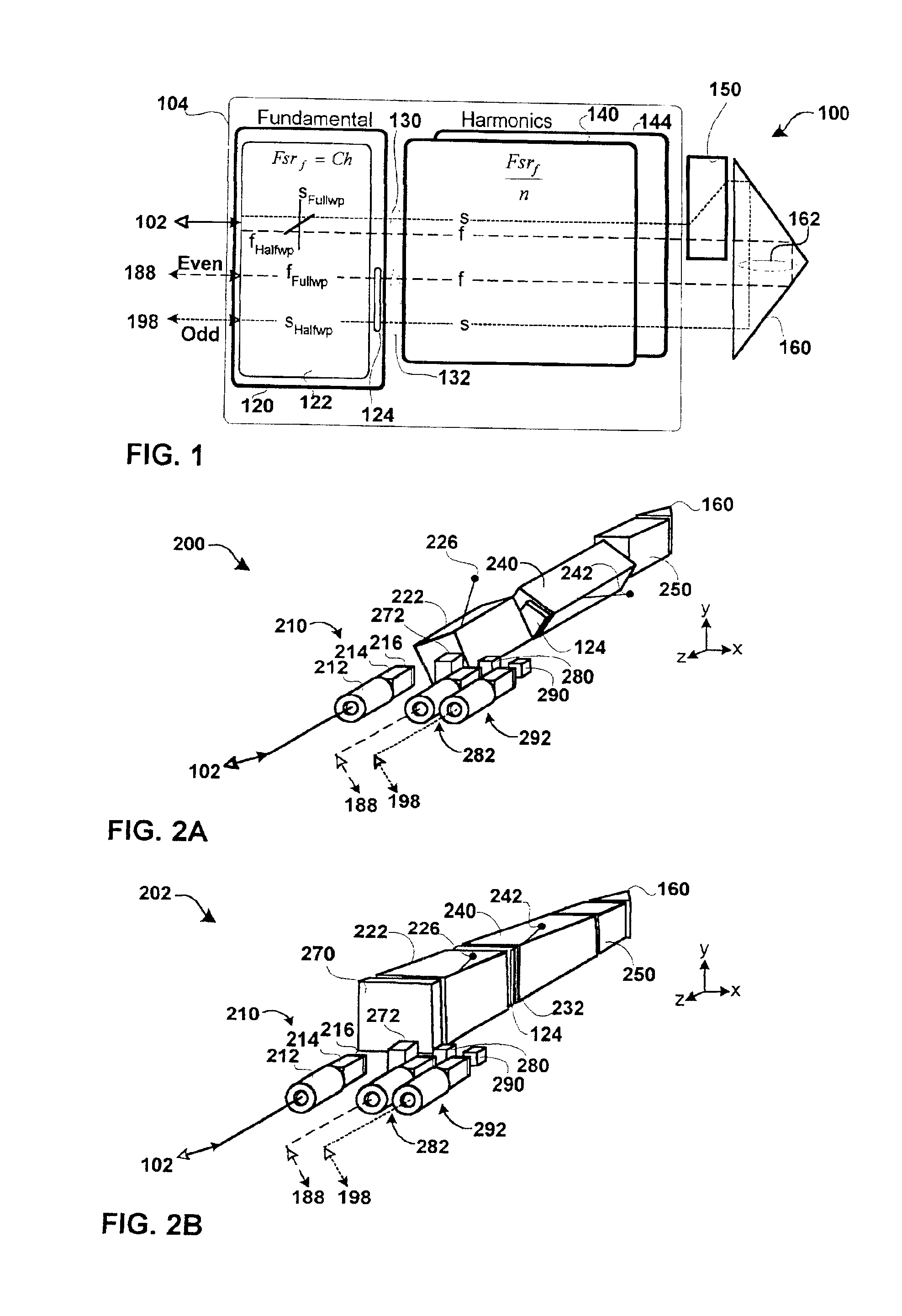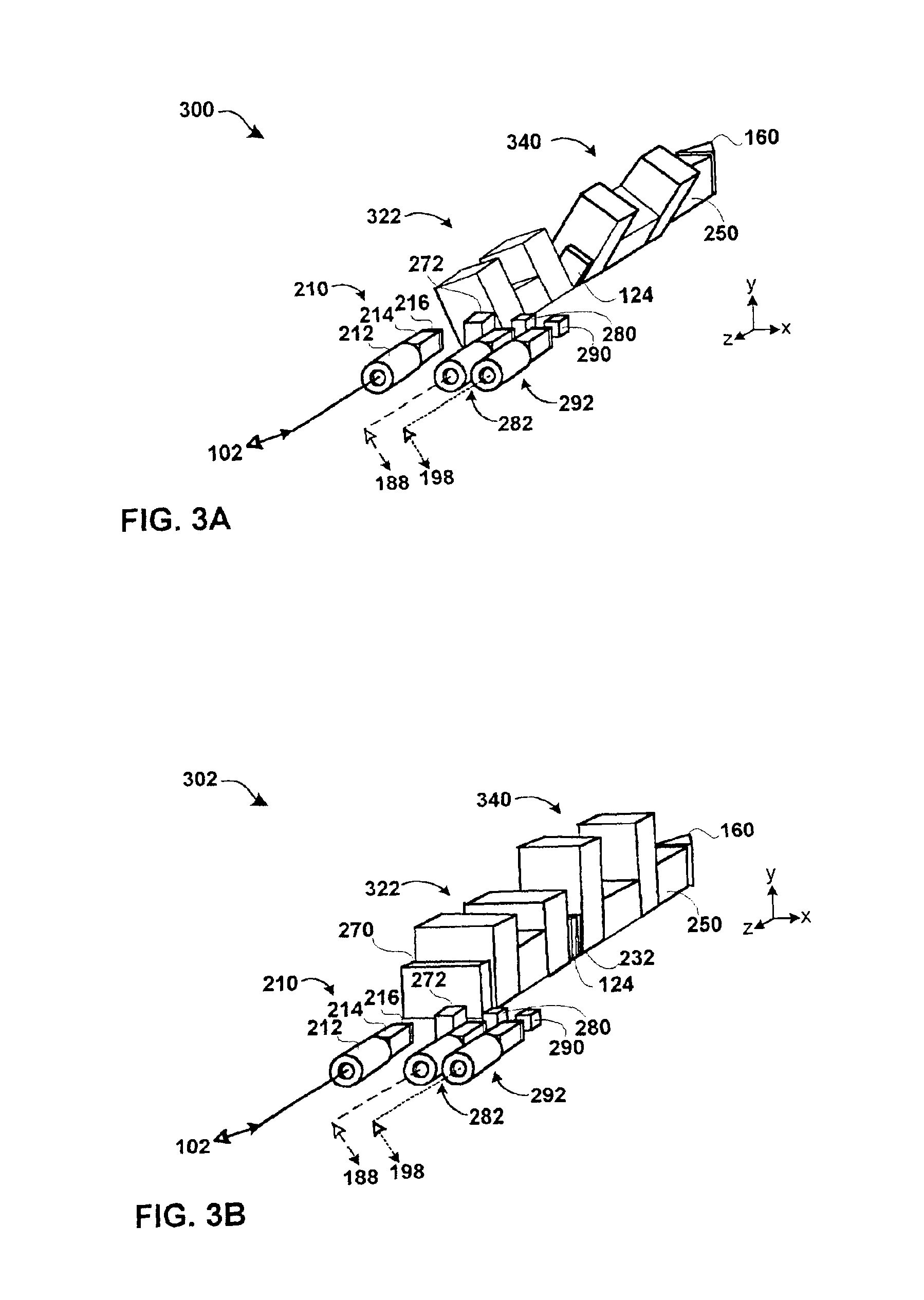Method and apparatus for an optical multiplexer and demultiplexer with an optical processing loop
a multi-channel, optical processing loop technology, applied in the field of optical filters, can solve the problems of limiting factors such as noise and inter-channel interference, and the requirements for optical filters used in any of these applications are very demanding, and achieve the effect of improving the integrity of optical signals
- Summary
- Abstract
- Description
- Claims
- Application Information
AI Technical Summary
Benefits of technology
Problems solved by technology
Method used
Image
Examples
Embodiment Construction
An optical device is disclosed that can be used in a range of telecommunications applications including optical multiplexers / demultiplexers and optical routers. The optical device includes an optical processing loop which allows multi-stage performance characteristics to be achieved with a single physical filtration stage. Optical processing on the first leg and second legs of the loop is asymmetrical thereby improving the integrity of the optical signals by effecting complementary chromatic dispersion for each channel on the first and second legs.
FIG. 1 is a hardware block diagram of an embodiment of the optical mux / demux 100 with an optical processing loop 130,162,132 formed by a single stage 104 optically coupled to a splitter / combiner 150 and retro reflector 160. The mux / demux is designed to operate on the narrowly spaced frequency division multiplexed channels of a telecommunications grid. These channels may be spaced apart in frequency at 50 GHz intervals or less. The mux / demu...
PUM
 Login to View More
Login to View More Abstract
Description
Claims
Application Information
 Login to View More
Login to View More - R&D
- Intellectual Property
- Life Sciences
- Materials
- Tech Scout
- Unparalleled Data Quality
- Higher Quality Content
- 60% Fewer Hallucinations
Browse by: Latest US Patents, China's latest patents, Technical Efficacy Thesaurus, Application Domain, Technology Topic, Popular Technical Reports.
© 2025 PatSnap. All rights reserved.Legal|Privacy policy|Modern Slavery Act Transparency Statement|Sitemap|About US| Contact US: help@patsnap.com



